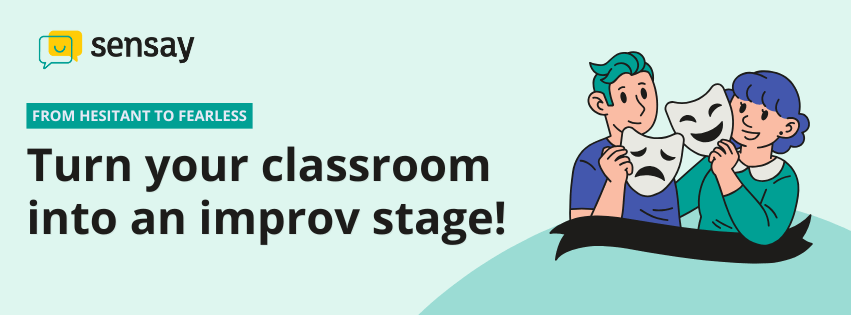Benedict Cumberbatch, the actor behind Doctor Strange and Sherlock Holmes, once appeared in a famous The Tonight Show segment, where he and host Jimmy Fallon performed a hilarious improvisational skit.
The rules were simple:
Benedict first provided a few random adjectives, nouns, and interjections, and then Jimmy threw those words into an “absurd interrogation scene.” The result? Pure comedy gold and a perfect example of spontaneous language use.
✨ Why this works in your classroom
- Anxiety drops: Students often worry about making mistakes when speaking in English. In a funny context, mistakes turn into laughter instead of embarrassment.
- Language flows naturally: Through role play, students use newly learned vocabulary and sentence structures without even realizing it.
- Memory improves: When students act out the words they’ve suggested, those words become much easier to remember.
- Confidence builds: Even with silly lines, being able to say a complete dialogue in English gives students a real sense of achievement.
👩🏫 How to run this activity
Step 1: Collect words
Ask each student to provide 1–2 word:
- Adjectives (funny, scary, shiny…)
- Nouns (dragon, sandwich, police car…)
- Interjections (Oh no! Yikes! Bravo! …)
Write them where everyone can see. .
Step 2: Random word draw
The teacher or students randomly draw and combine words to form a “challenge pack.”
Example:
- Adjective: grumpy
- Noun: banana
- Interjection: Holy cow!
Step 3: Improvise in groups
Students work in groups. create a short scene using their words.
Example:
- Scenario: An interrogation at the police station
- Roles: A “grumpy” officer and a suspect accused of stealing a “banana”
- Dialogue must include the interjection “Holy cow!”
Step 4: Perform and celebrate
Each group performs on stage. The rest of the class votes for:
- Funniest performance 🎭
- Most creative use of words 💡
- Most natural English expression 🗣️
🎯 Learning objectives
- Language skills: Practice spontaneous speaking, vocabulary use, and sentence building
- Cognitive skills: Develop quick thinking and creativity
- Affective goals: Increase speaking confidence and classroom participation
📝 Tips for teachers
- Model it first: Do a 30-second example with a volunteer so students see that “silly is the goal” and “being funny is allowed.”
- Provide sentence starters for newer learners: “I am a ___ detective” / “This ___ doesn’t belong to me!”
- Skip the grammar corrections: Today’s goal is bravery, not perfection. The key is to make sure students dare to speak.
- Let students write first if full improv feels too scary: they can rehearse for 3 minutes before performing
💡 Ready to try it?
Language learning doesn’t need to be serious to be effective. Sometimes the best learning happens when students forget they’re learning at all. Turning the classroom into an “improv stage” not only helps students learn vocabulary and structures, but also allows them to rediscover the courage to speak English through laughter.
Next class, give this a try. You might be amazed at how the quiet kid in the back suddenly becomes a comedy genius.
For advanced students: Check out our Sensay Fluency Classroom Packs – C1 & C2, these packs help students not only improvise but also build truly natural and fluent English expressions.

